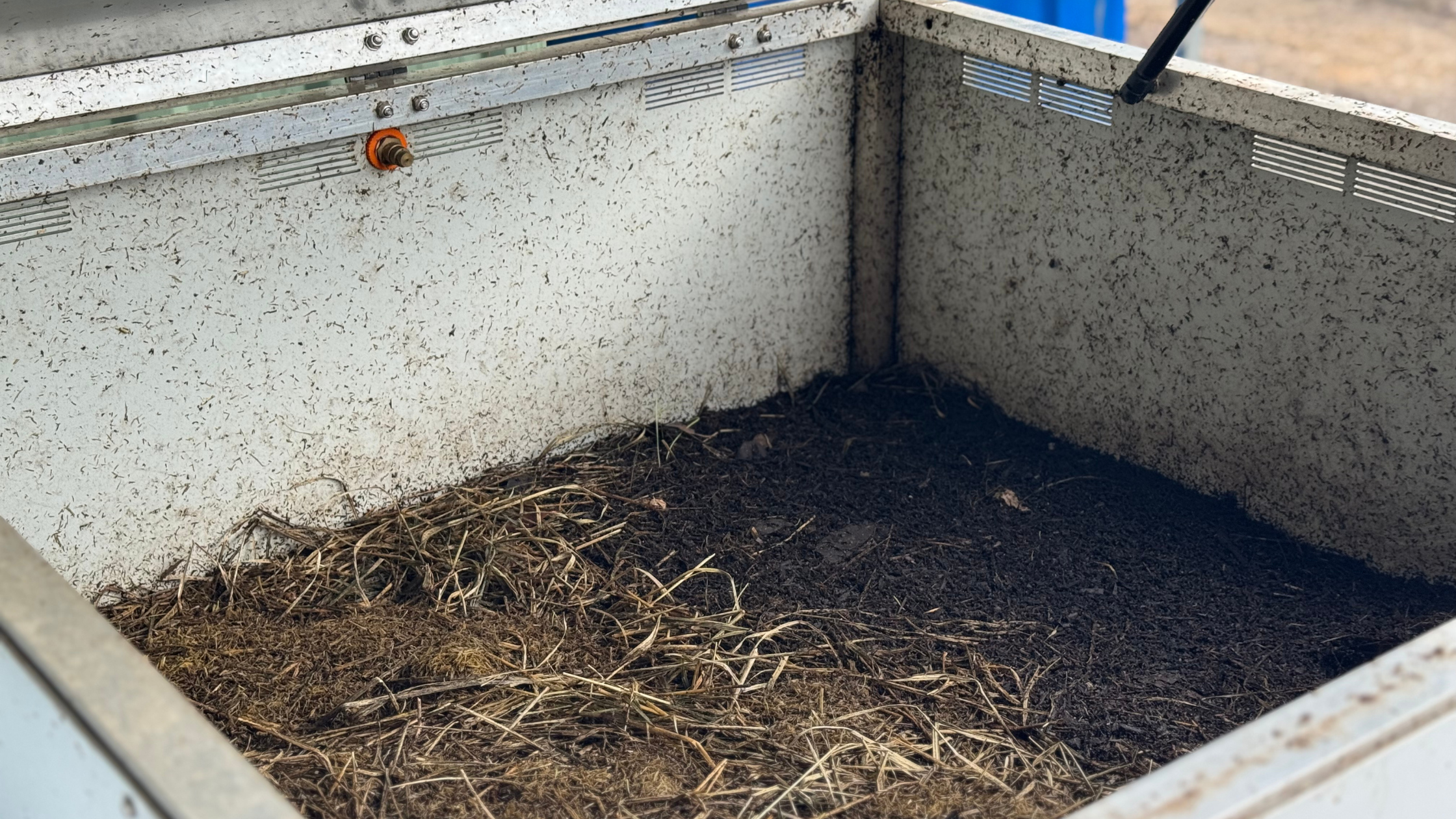Benefits of Continuous Flow-Through Worm Farms with Large Thermal Mass
Continuous Flow-Through (CFT) worm farms are designed to process organic waste into worm castings efficiently, using a large volume of bedding and organic material to create a substantial thermal mass. This was a key design consideration when innovating our Worm Mod Units. This thermal mass provides a stable and forgiving environment for worms, offering significant advantages over smaller, tiered worm farm systems, especially in extreme climates and when testing new feedstocks.
What is Thermal Mass in Worm Farms?
In CFT worm farms, thermal mass refers to the large volume of bedding (e.g., compost, manures, or coir) and organic material contained within a single, deep system, (ours measures a cubic meter). This mass acts as a buffer, stabilising temperature, moisture, and environmental conditions. Unlike tiered systems, which use shallow trays with limited bedding, CFT systems provide worms with a spacious habitat that supports their temperature, PH and eating patterns.
Temperature Regulation in Extreme Climates
Worms thrive in temperatures between 16–27°C (60–80°F), but extreme heat or cold can disrupt their activity. The large thermal mass of CFT worm farms helps maintain this range:
-
Hot Climates: The dense bedding absorbs and dissipates heat slowly, preventing rapid temperature spikes. During heatwaves, worms can migrate to cooler zones within the system, avoiding stress. For example, in hot regions, the thermal mass can keep internal temperatures significantly lower than external conditions, especially when shaded or paired with moisture management like misting. In contrast, tiered systems, with their thin bedding layers, heat up quickly, potentially harming worms. Read our blog for tips on managing worms in hot climates.
-
Cold Climates: Microbial activity during decomposition generates heat, which the thermal mass retains, keeping worms warm and active in cold weather. This reduces the risk of dormancy, which is common in tiered systems where small bedding volumes cool rapidly. Adding insulation, such as straw or foam, can enhance this effect, but the thermal mass alone provides a significant buffer.
This temperature stability makes CFT worm farms suitable for diverse climates, from arid deserts to cold highlands, ensuring consistent vermicomposting year-round.
Flexibility for Feedstock Testing
Testing different feedstocks—such as composts, manure, food scraps, hay, or green waste—is essential before loading up a worm farm with an input. New feedstocks (particularly ones that you're not sure about e.g. a new compost made from meat and paunch) can introduce risks like anaerobic conditions or acidity. The large thermal mass and CFT design mitigate these issues:
-
Anaerobic Conditions: If a feedstock begins to decompose before the worms can get to it (because the particle size is too large or it's too much nitrogen for their consumption) they are able to move away from the food that has begun rotting. CFT systems allow continuous feeding from the top and harvesting from the bottom, ensuring worms always have access to a healthy environment. Tiered systems, with confined trays, can trap worms in anaerobic conditions, leading to population decline.
-
Acidity Management: Feedstocks like coffee grounds or citrus peels can lower pH below the optimal 6.5–7 range. The large volume of a CFT system dilutes acidic pockets, allowing worms to avoid affected areas. If some goes in, it is not a worry - it is only a concern when the worms are in a small, concentrated area. Adding pH-balancing materials, such as dolomite or crushed eggshells, can further stabilise conditions. In tiered systems, small tray volumes amplify pH imbalances, causing population decline.
This flexibility enables users to safely test diverse materials, such as agricultural waste or food organics, without risking worm health. The best way to do this is by strip feeding!
Why Tiered Systems Fall Short
Tiered worm farms, with stackable trays, are common for small-scale vermicomposting but have limitations compared to CFT systems:
-
Limited Thermal Mass: Shallow trays lack the bedding volume to buffer temperature changes, making them prone to overheating in summer or cooling in winter, which disrupts worm activity.
-
Increased Maintenance: Overfeeding in trays can lead to anaerobic or acidic conditions, requiring careful monitoring. Harvesting involves moving trays, disturbing worms and slowing composting. CFT systems require less intervention, as worms work continuously in a single, undisturbed environment.
-
Small Capacity: Tiered systems are designed for low waste volumes (e.g., 1–2L/day), unsuitable for larger operations like farms or community gardens. CFT systems, like our Worm Farms, can process significantly more waste, often up to 20L/day, depending on size.
-
Environmental Sensitivity: The confined space of trays offers little room for worms to escape unfavourable conditions, increasing risks from temperature swings or feedstock issues. CFT systems provide a spacious, resilient habitat.
Additional Benefits of CFT Worm Farms
Beyond thermal mass, CFT systems offer practical advantages:
-
Efficiency: Continuous feeding and harvesting reduce labour compared to sorting worms from castings in tiered systems.
-
Scalability: Large CFT systems can handle high waste volumes, producing substantial castings for soil amendment or liquid applications like worm juice.
-
Aeration and Moisture Control: CFT designs often include ventilation and moisture systems to maintain optimal conditions, preventing odours and supporting worm health.
Applications
CFT worm farms with large thermal mass are used by growers, homesteaders, farmers, community gardens, and businesses to process organic waste, such as manure, food scraps, or green waste, into nutrient-rich castings. These castings improve soil structure, enhance microbial activity, and support sustainable agriculture. The systems are particularly effective for large-scale operations aiming to divert waste from landfills or regenerate degraded soils.
CFT worm farms with large thermal mass provide a stable, low-maintenance, and scalable solution for vermicomposting. Their ability to regulate temperature and support feedstock experimentation makes them a practical choice for diverse climates and waste management needs, outperforming smaller, tiered systems in most applications.


